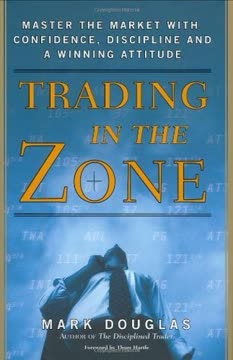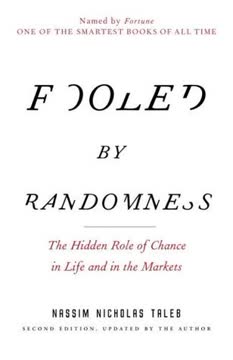Key Takeaways
1. Master the art of selling to maximize profits and minimize losses
Beginners buy whenever some vague tip floats their way. Experienced traders know that serious buying requires serious research.
Selling is crucial. Many traders focus solely on buying, neglecting the equally important aspect of selling. Proper selling techniques can help lock in profits and limit losses. Develop a clear exit strategy before entering a trade, including both profit targets and stop-loss levels. This approach reduces emotional decision-making and improves overall trading performance.
Consider multiple selling strategies:
- Selling at a target price
- Using trailing stops to protect profits
- Implementing time-based exits
- Responding to changes in market conditions or "engine noise"
By mastering various selling techniques, traders can adapt to different market scenarios and optimize their trading outcomes. Remember that successful trading involves both entering and exiting positions effectively.
2. Understand market psychology to anticipate trends and reversals
Stock market bottoms tend to be narrow and sharp, while the tops tend to be broad and uneven.
Crowd behavior drives markets. Understanding market psychology is essential for anticipating trends and potential reversals. Recognize that fear and greed are powerful emotional forces that influence market movements. Fear tends to create sharp, panic-driven bottoms, while greed often leads to prolonged, irregular tops.
Key psychological indicators:
- Sentiment indicators (e.g., bullish consensus, put/call ratio)
- New High-New Low Index
- Market extremes (parabolic moves, excessive optimism/pessimism)
- False breakouts and divergences
By studying these psychological factors, traders can gain insight into potential market turning points and make more informed decisions. Remember that markets often overshoot rational expectations in both directions due to emotional extremes.
3. Utilize technical analysis tools for informed decision-making
Moving averages help define the value zone by tracking public consensus.
Technical analysis reveals patterns. Employ a variety of technical tools to analyze market trends, support and resistance levels, and potential entry and exit points. Moving averages, in particular, help identify value zones and trend directions. Combine multiple indicators for a more comprehensive analysis.
Essential technical tools:
- Moving averages (e.g., 13-day and 26-day EMAs)
- MACD (Moving Average Convergence Divergence)
- Force Index
- Channels and envelopes
- Support and resistance levels
Develop proficiency in using these tools to identify trends, divergences, and potential reversal points. Remember that no single indicator is infallible, and combining multiple tools can provide a more robust analysis. Always consider the broader market context when interpreting technical signals.
4. Implement effective risk management strategies
The 2% Rule prohibits you from risking more than 2% of your account equity on any single trade.
Protect your capital. Effective risk management is crucial for long-term trading success. Implement strict rules to limit potential losses and preserve your trading capital. The 2% Rule and the 6% Rule are fundamental risk management strategies that help prevent catastrophic losses.
Key risk management principles:
- 2% Rule: Limit risk per trade to 2% of account equity
- 6% Rule: Stop trading if monthly losses reach 6% of account equity
- Use appropriate position sizing based on risk tolerance
- Implement stop-loss orders to limit potential losses
- Diversify trades across different markets or sectors
By adhering to these risk management principles, traders can withstand inevitable losses and maintain the ability to capitalize on future opportunities. Remember that preserving capital is as important as generating profits.
5. Develop a comprehensive trading plan and maintain discipline
Putting a plan on paper has a powerful psychological effect on most people. It reduces stress, which leads to an increase in profitability.
Planning breeds success. A well-defined trading plan is essential for consistent performance. Develop a comprehensive plan that outlines your trading strategy, risk management rules, and specific entry and exit criteria. Writing down your plan helps clarify your thoughts and reduces emotional decision-making during trades.
Key components of a trading plan:
- Overall trading strategy and timeframe
- Specific entry and exit criteria
- Risk management rules (position sizing, stop-loss levels)
- Money management guidelines
- Record-keeping and performance evaluation methods
Maintain discipline by strictly adhering to your trading plan. Regularly review and update your plan based on market conditions and your performance. Remember that consistency and discipline are often more important than individual trade outcomes.
6. Learn to sell short to profit from market declines
Shorting is different from buying because mass psychology is different at tops and bottoms, in uptrends and downtrends.
Expand your trading toolkit. Learning to sell short allows traders to profit from market declines, effectively doubling their opportunities. Understand the unique characteristics of shorting, including the potential for faster price movements and the need for precise timing.
Key considerations for short selling:
- Identify stocks with bearish technical patterns
- Consider fundamental factors that may lead to price declines
- Be aware of short interest and potential short squeezes
- Use appropriate risk management techniques (e.g., stop-loss orders)
- Recognize that markets have an upward bias over the long term
Develop proficiency in short selling techniques to complement your long trading strategies. This balanced approach allows you to adapt to various market conditions and potentially profit in both rising and falling markets.
7. Adapt to changing market conditions and learn from bear markets
Trees do not grow to the sky, and bear markets do not go down to zero.
Flexibility is key. Market conditions constantly evolve, and successful traders must adapt their strategies accordingly. Bear markets, in particular, offer valuable lessons in risk management and the importance of capital preservation. Use bear markets as opportunities to refine your trading skills and identify potential long-term investment opportunities.
Lessons from bear markets:
- Recognize the importance of preserving capital
- Identify sectors and stocks that show relative strength
- Look for signs of market bottoms (e.g., capitulation, extreme pessimism)
- Understand the characteristics of bear market rallies
- Develop strategies for trading in volatile, declining markets
By studying and adapting to changing market conditions, traders can improve their long-term performance and resilience. Remember that markets move in cycles, and being prepared for both bullish and bearish environments is crucial for sustained success.
Last updated:
FAQ
1. What is Sell and Sell Short by Alexander Elder about?
- Comprehensive selling guide: The book focuses on the art and science of selling stocks and selling short, providing detailed strategies for both exiting long positions and profiting from market declines.
- Psychology and discipline: Elder emphasizes the psychological challenges of selling, the importance of discipline, and the need for structured decision-making and record-keeping.
- Technical and fundamental integration: The book combines technical tools (like moving averages, MACD, Force Index, and the New High-New Low Index) with fundamental analysis to time entries and exits.
- Practical Q&A format: It uses a question-and-answer structure, real trade examples, and lessons from bear markets to prepare readers for real-world trading challenges.
2. Why should I read Sell and Sell Short by Alexander Elder?
- Unique focus on selling: Unlike most trading books that focus on buying, Elder’s book fills a critical gap by teaching when and how to sell, which is essential for preserving profits and managing risk.
- Master short selling: The book demystifies short selling, explaining its mechanics, risks, and advantages, and encourages traders to become comfortable with profiting from declines.
- Proven systems and methods: Elder presents tested methods like the Triple Screen system, Impulse system, SafeZone stops, and the New High-New Low Index, all designed to help traders make objective decisions.
- Lessons from real markets: Insights from historical bear markets, especially 2007-2009, show how to apply the book’s principles in volatile conditions.
3. What are the key takeaways from Sell and Sell Short by Alexander Elder?
- Selling is as important as buying: Knowing when and how to sell is crucial for aligning with market cycles and protecting capital.
- Risk management is foundational: The 2% and 6% rules, position sizing, and stop placement are central to Elder’s approach to risk control.
- Trading psychology matters: Emotional discipline, self-care, and record-keeping are vital for long-term trading success.
- Technical tools guide decisions: Indicators like MACD, Force Index, and the New High-New Low Index help confirm trends and signal reversals.
4. What are the best quotes from Sell and Sell Short by Alexander Elder and what do they mean?
- "The area least covered in trading literature was selling." Elder highlights the lack of focus on selling in most trading education, underscoring the book’s unique value.
- "Size does not matter. What matters is risk." This quote emphasizes that controlling risk is more important than the size of a trade.
- "I am a professional—I sell hope." Quoted from a market maker, this reflects the reality that most option buyers lose money, while sellers profit from time decay.
- "The single most important factor in your long-term success or failure is the quality of your records." Elder stresses the critical role of detailed record-keeping in trading improvement.
5. How does Alexander Elder explain the importance of selling and short selling in trading?
- Selling is a hard business: Elder compares selling to a difficult but necessary task, requiring discipline and realism rather than hope and optimism.
- Markets move in cycles: Understanding that prices must fall as well as rise, Elder teaches that selling is essential to align with market rhythms.
- Short selling doubles opportunities: Professionals use short selling to profit from declines, and Elder encourages traders to master this skill after learning to sell long positions.
- Overcoming psychological barriers: Many traders fear shorting, but Elder provides clear explanations and analogies to help readers become comfortable with it.
6. What are the "Three Great Divides" in trading according to Sell and Sell Short by Alexander Elder?
- Technical vs. Fundamental Analysis: Fundamentalists study company values and supply-demand, while technicians focus on price patterns and indicators, believing price reflects all known information.
- Trend vs. Counter-Trend Trading: Trend traders ride long directional moves, while counter-trend traders capitalize on market oscillations and reversals, each style suiting different temperaments.
- Discretionary vs. Systematic Trading: Discretionary traders interpret charts and make real-time decisions, whereas systematic traders rely on pre-designed, backtested systems to generate signals.
7. How does Sell and Sell Short by Alexander Elder address trading psychology and emotional discipline?
- Mind as a trading tool: Emotions, hopes, and fears directly affect trading decisions; successful traders isolate themselves to make independent, unbiased choices.
- Discipline and self-care: Elder advises traders to treat themselves well, celebrate successes, and avoid trading when in a foul mood to maintain a calm, focused mindset.
- Addiction and temperament risks: Those with poor impulse control or substance issues are unlikely to succeed; trading requires emotional stability and a genuine love for the process.
- Avoiding regret and greed: Elder warns that regret and greed can sabotage trading, leading to overstaying trades or chasing profits.
8. What are the 2% and 6% risk management rules in Sell and Sell Short by Alexander Elder?
- 2% Rule: Never risk more than 2% of your account equity on a single trade to avoid devastating losses that can ruin confidence and capital.
- 6% Rule: Stop trading for the rest of the month if cumulative losses reach 6% of your account, preventing a series of losses from destroying your account.
- Available Risk concept: Before entering a trade, calculate if the 6% monthly loss limit allows it, considering current losses and risk on open trades.
- Risk over trade size: Elder emphasizes that controlling risk is more important than the size or cost of a trade.
9. How does Alexander Elder recommend setting stops and managing trade exits in Sell and Sell Short?
- Hard vs. soft stops: Hard stops are orders placed in the market; soft stops are mental levels for discretionary exits, with hard stops recommended for beginners.
- Stop placement strategies: Avoid placing stops just below the latest low to prevent being stopped out by whipsaws; use methods like "Nic’s stop" or SafeZone stops to filter noise.
- Trailing stops and adjustment: Use trailing stops (Parabolic, SafeZone, Volatility-Drop) to protect profits and stay in trends, only moving stops in the direction of the trade.
- Balancing risk and reward: Wider stops require smaller position sizes, while tighter stops risk more frequent stop-outs; balance stop width with volatility and trade objectives.
10. What is the "Iron Triangle" of risk control in Sell and Sell Short by Alexander Elder?
- Three components: The Iron Triangle consists of risk per share (distance from entry to stop), total permitted risk per trade (based on money management rules), and position size (number of shares to trade).
- Position sizing based on risk: Position size is calculated by dividing total risk allowed by risk per share, ensuring losses stay within acceptable limits.
- Risk over size: Elder stresses that risk control is more important than trade size, helping traders avoid catastrophic losses.
- Practical application: This method ensures that every trade fits within the trader’s overall risk management plan.
11. How does Alexander Elder use technical indicators like the New High-New Low Index and MACD in his trading systems?
- New High-New Low Index (NH-NL): Elder considers NH-NL the best leading indicator for market health, confirming trends and warning of tops and bottoms through divergences.
- MACD and Force Index: These indicators help identify momentum shifts and trend reversals, with bearish divergences signaling tops and bullish divergences signaling bottoms.
- Impulse system: This system colors bars to indicate buy, sell, or stand aside signals, guiding trading actions and censoring impulsive trades.
- Multi-timeframe analysis: Elder recommends making strategic decisions on weekly charts and tactical decisions on daily charts, aligning timing and risk management.
12. What practical lessons and advanced strategies does Sell and Sell Short by Alexander Elder offer for trading in bear markets and non-equity instruments?
- Bear market strategies: Elder highlights the importance of swing trading—shorting rallies and covering near oversold zones—rather than holding shorts throughout a bear market.
- Asymmetry of tops and bottoms: Bear markets have sharp, panic-driven bottoms and broad, drawn-out tops, affecting stop placement and trade management.
- Shorting in futures and forex: Shorting is integral in these markets, with unique risks and mechanics compared to stocks; Elder warns about the dangers of high leverage and broker practices in forex.
- Options writing: Elder differentiates between covered and naked options writing, advising beginners to understand the risks and discipline required before engaging in naked writing.
Review Summary
The New Sell and Sell Short receives generally positive reviews, with readers praising its clear explanations of trading strategies and psychology. Many find it valuable for swing traders and those interested in market dynamics. Some note that it covers similar material to Elder's previous books. Reviewers appreciate Elder's insights on selling, short selling, and risk management. While some consider it excellent for active traders, others find the technical analysis too complex for their needs. Overall, readers recommend it for those looking to profit from short-term price movements.
Similar Books









Download PDF
Download EPUB
.epub digital book format is ideal for reading ebooks on phones, tablets, and e-readers.







